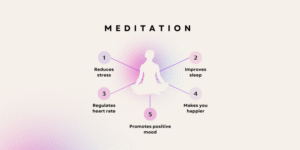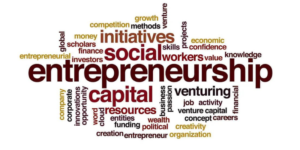Interviews are a cornerstone of modern recruitment and selection processes. They provide employers with the opportunity to assess not only a candidate’s qualifications and experience but also their personal attributes, communication skills, and organisational fit. This essay explores the purpose, types, and functions of interviews, drawing upon scholarly research, HR textbooks, and industry practice to explain why interviews remain a crucial step in hiring decisions.
1.0 The Purpose of Interviews
The primary objective of an interview is to evaluate whether a candidate possesses the skills, competencies, and personality traits required for the job and organisation (Rynes, Bretz & Gerhart, 1991). According to Dipboye (2017), the selection interview allows employers to gather qualitative insights that are not easily captured through written applications or aptitude tests. While application forms and CVs provide factual data, the interview explores how candidates think, communicate, and behave.
Odeku (2015) highlights that interviews serve two major purposes: assessment and communication. From an employer’s perspective, they help determine suitability for a role, while from the candidate’s viewpoint, they offer a chance to learn about the organisation’s culture and expectations. This dual purpose reinforces the mutual selection process that recruitment represents — both sides are evaluating fit.
Furthermore, Wingate and Bourdage (2024) in Human Resource Management emphasise that interviews are not just about testing competence but also about assessing cultural alignment, motivation, and emotional intelligence. For example, a candidate for a customer-facing position may be assessed for interpersonal warmth and adaptability, qualities that cannot be fully conveyed in a written application.
2.0 Why Employers Use Interviews
Interviews allow employers to:
- Verify claims made in CVs and cover letters.
- Observe communication style, body language, and confidence.
- Assess problem-solving and situational responses.
- Determine organisational fit based on values, personality, and team compatibility (Newell, 2005).
According to Krishnan, Ramalingam and Ching (2017), the job interview remains the most widely used selection method globally, with over 90% of organisations employing some form of interview in their hiring process. Even with the rise of psychometric and AI-driven tools, the human element of interviews remains irreplaceable in gauging interpersonal skills and attitudes.
For example, in graduate recruitment, many UK employers such as Deloitte or the NHS Graduate Management Training Scheme use structured interviews to assess applicants’ competencies, leadership potential, and alignment with organisational values (CIPD, 2024).
3.0 Structured vs. Unstructured Interviews
The format of an interview depends on the organisation’s size, structure, and recruitment strategy. Structured interviews are more formal and standardised, asking every candidate the same set of questions, whereas unstructured interviews are more conversational and flexible (Dipboye, 1994).
According to Chen, Lee and Huang (2019), structured interviews are preferred for ensuring fairness and comparability, as they reduce bias and allow objective scoring. They are particularly important in ensuring equal opportunities across diverse candidate groups. For instance, large corporations often use competency-based structured interviews to measure specific skills such as leadership, teamwork, and analytical ability.
Conversely, unstructured interviews can be beneficial in smaller organisations where cultural fit and personality are prioritised. However, as Makushkin (2021) argues, unstructured interviews may be more susceptible to bias because they rely heavily on the interviewer’s subjective impressions.
In practice, many employers adopt a hybrid approach, combining structured questioning with unstructured discussion to assess both competence and interpersonal dynamics.
4.0 The Interview as a Two-Way Process
While employers use interviews to assess candidates, applicants also use interviews to evaluate whether the organisation aligns with their career goals, values, and expectations (Dipboye, 2017). According to Wingate and Bourdage (2024), candidates increasingly view interviews as opportunities to assess organisational culture, inclusivity, and flexibility — factors that influence job acceptance rates.
Cable and Yu (2007) describe this as the psychological contract formation stage, where both employer and candidate establish mutual expectations. For example, a graduate may use the interview to ask about professional development opportunities, work-life balance, or diversity policies — demonstrating engagement while assessing organisational fit.
This reciprocal nature highlights why interviews are essential: they facilitate informed decision-making for both parties.
5.0 Interview Structure and Best Practices
An effective interview is guided by job analysis and a person specification, ensuring questions are relevant to the position’s competencies (Kshatriya, 2016). Structured interviews typically include:
- Introduction – building rapport and explaining the process.
- Competency-based questions – exploring past behaviour using the STAR method (Situation, Task, Action, Result).
- Scenario questions – testing problem-solving and critical thinking.
- Opportunity for candidates’ questions – showing two-way engagement.
Behavioural interviewing, according to Asselin (2006), allows employers to predict future performance by examining how candidates handled past challenges. For instance, a hiring manager might ask: “Tell me about a time when you had to manage conflicting priorities.” The response reveals planning, prioritisation, and communication skills.
Structured interviews also help ensure consistency and legal defensibility in hiring decisions (Stevens, 2012). Employers using evidence-based scoring rubrics minimise discrimination risk and improve reliability across interviewers.
6.0 The Interviewer’s Role
The interviewer’s skill and preparation significantly impact the outcome of the interview. As Odeku (2015) explains, interviewers must balance professional objectivity with empathy and active listening to create a supportive atmosphere. A panel may include representatives from HR, technical departments, and management, ensuring diverse perspectives on the candidate’s suitability.
For example, in academic recruitment, it is common for candidates to face a panel interview including faculty, administrators, and HR staff. This ensures that both subject expertise and institutional fit are assessed.
Interviewers must also adhere to ethical standards and equal opportunity principles, as highlighted in the Equality Act 2010 and reinforced by CIPD (2024). Biased or discriminatory questioning — such as those relating to age, gender, or personal circumstances — should be strictly avoided.
7.0 Preparing for Interviews
From the candidate’s perspective, thorough preparation is key to performing well. As Argue (2015) notes, effective candidates research the organisation’s mission, products, and culture, and practise articulating their achievements confidently.
Practical steps include:
- Reviewing the job description and person specification carefully.
- Reflecting on personal strengths and relevant examples.
- Practising responses to common questions.
- Preparing thoughtful questions to ask the panel.
- Planning travel and logistics to arrive punctually and composed.
Career services in UK universities often recommend mock interviews with advisers, which simulate real conditions and build confidence. The National Careers Service (2023) further advises candidates to prepare concise yet impactful answers using the STAR framework.
8.0 Duration, Format and Evaluation
Interviews typically last between 30 minutes and one hour. After the session, interviewers compare notes and score candidates based on predefined criteria (Newell, 2005). This evaluation process ensures fairness and transparency.
In larger organisations, interviews are often one part of a broader assessment process, which may include tests, presentations, or group exercises (CIPD, 2024). The final hiring decision usually reflects both interview performance and overall suitability.
9.0 The Evolving Role of Interviews
While traditional face-to-face interviews remain common, technology has transformed the interview process. Virtual interviews and AI-assisted tools are now widely used, particularly since the COVID-19 pandemic. However, as Shafique (2012) argues, technology should complement, not replace, human judgment. The emotional intelligence and rapport-building that define effective interviewing cannot be fully automated.
Future trends point to data-informed interviewing, where analytics support human decision-making, and video analysis tools provide insights into communication style and confidence. Nevertheless, ethical considerations around bias and privacy remain central to responsible implementation.
Interviews remain one of the most valuable stages in the recruitment and selection process, providing a unique platform for both employers and candidates to evaluate each other. They are designed to assess competence, motivation, cultural fit, and interpersonal skills — qualities essential for long-term organisational success.
A well-structured interview ensures fairness, consistency, and strategic alignment between the individual and the organisation’s goals. As Wingate and Bourdage (2024) affirm, interviews are not merely about hiring the best candidate but about fostering relationships that enhance organisational performance and culture.
Ultimately, interviews embody the human element in recruitment — combining analytical evaluation with intuition, empathy, and connection — ensuring that behind every job match lies mutual understanding and shared purpose.
References
Argue, M. (2015) The Importance of the Strategic Recruitment and Selection Process on Meeting an Organisation’s Objectives. Dublin: Dublin Business School.
Asselin, M.E. (2006) ‘Making the right choice: Strategies for effective interviews’, Nursing Management, 37(8), pp. 11–17.
Cable, D.M. & Yu, K.Y.T. (2007) Perspectives on Organisational Fit. New York: Psychology Press.
Chen, C.C., Lee, Y.H. & Huang, T.C. (2019) ‘Effects of stress interviews on selection/recruitment function of employment interviews’, Asia Pacific Journal of Human Resources, 57(2), pp. 145–163.
CIPD (2024) Recruitment and Selection Factsheet. London: Chartered Institute of Personnel and Development.
Dipboye, R.L. (1994) ‘Structured and unstructured selection interviews: Beyond the job-fit model’, Research in Personnel and Human Resources Management, 12, pp. 1–47.
Dipboye, R.L. (2017) The Selection/Recruitment Interview: Core Processes and Contexts. Oxford: Wiley-Blackwell.
Krishnan, I.A., Ramalingam, S.J. & Ching, H.S. (2017) ‘The selection practices and recruitment of fresh graduates in local organisations’ job interviews’, Journal of Language and Communication, 4(2), pp. 65–79.
Makushkin, S.A. (2021) ‘Methods for recruiting and interviewing corporate staff’, Linguistics and Culture Review, 5(3), pp. 32–44.
Newell, S. (2005) Managing Human Resources: Personnel Management in Transition. London: Routledge.
Odeku, K.O. (2015) ‘The role of interviewers in job effective recruitment and selection processes’, Journal of Governance and Regulation, 4(2), pp. 77–86.
Rynes, S.L., Bretz, R.D. & Gerhart, B. (1991) ‘The importance of recruitment in job choice’, Personnel Psychology, 44(3), pp. 487–521.
Shafique, O. (2012) ‘Recruitment in the 21st Century’, Interdisciplinary Journal of Contemporary Research in Business, 4(2), pp. 887–901.
Wingate, T.G. & Bourdage, J.S. (2024) ‘What are interviews for? A qualitative study of employment interview goals and design’, Human Resource Management, 63(1), pp. 89–104.









